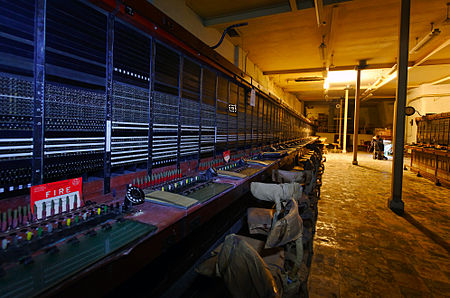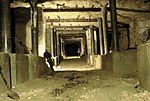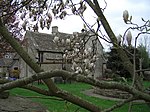Central Government War Headquarters

The Central Government War Headquarters (CGWHQ) is a 35-acre (14 ha) complex built 120 feet (37 m) underground as the United Kingdom's emergency government war headquarters – the hub of the country's alternative seat of power outside London during a nuclear war or conflict with the Soviet Union. It is in Corsham, Wiltshire, in a former Bath stone quarry known as Spring Quarry, under the present-day MoD Corsham.In 1940, during the Second World War, the site was acquired by the Minister of Aircraft Production and used as an underground engine factory. The war headquarters was commissioned in 1955, after approval by Prime Minister Anthony Eden. However, it became outdated shortly after it was built, due to intercontinental ballistic missiles being able to target it, and the formulation of other plans (such as PYTHON). Nevertheless, the complex continued to have a role in war plans and remained in operation for 30 years.The complex was known variously as "Stockwell", "Subterfuge", "Burlington", "Turnstile", "Chanticleer", "Peripheral", and "Site 3". It was also nicknamed "Hawthorn" by journalist Duncan Campbell, who first revealed its existence in his 1982 book War Plan UK. It was also mentioned by Peter Laurie in his 1979 revised edition of Beneath the City Streets.
Excerpt from the Wikipedia article Central Government War Headquarters (License: CC BY-SA 3.0, Authors, Images).Central Government War Headquarters
Westwells Road,
Geographical coordinates (GPS) Address Nearby Places Show on map
Geographical coordinates (GPS)
| Latitude | Longitude |
|---|---|
| N 51.42 ° | E -2.22 ° |
Address
Indigo
Westwells Road
SN13 9GW , Box
England, United Kingdom
Open on Google Maps









